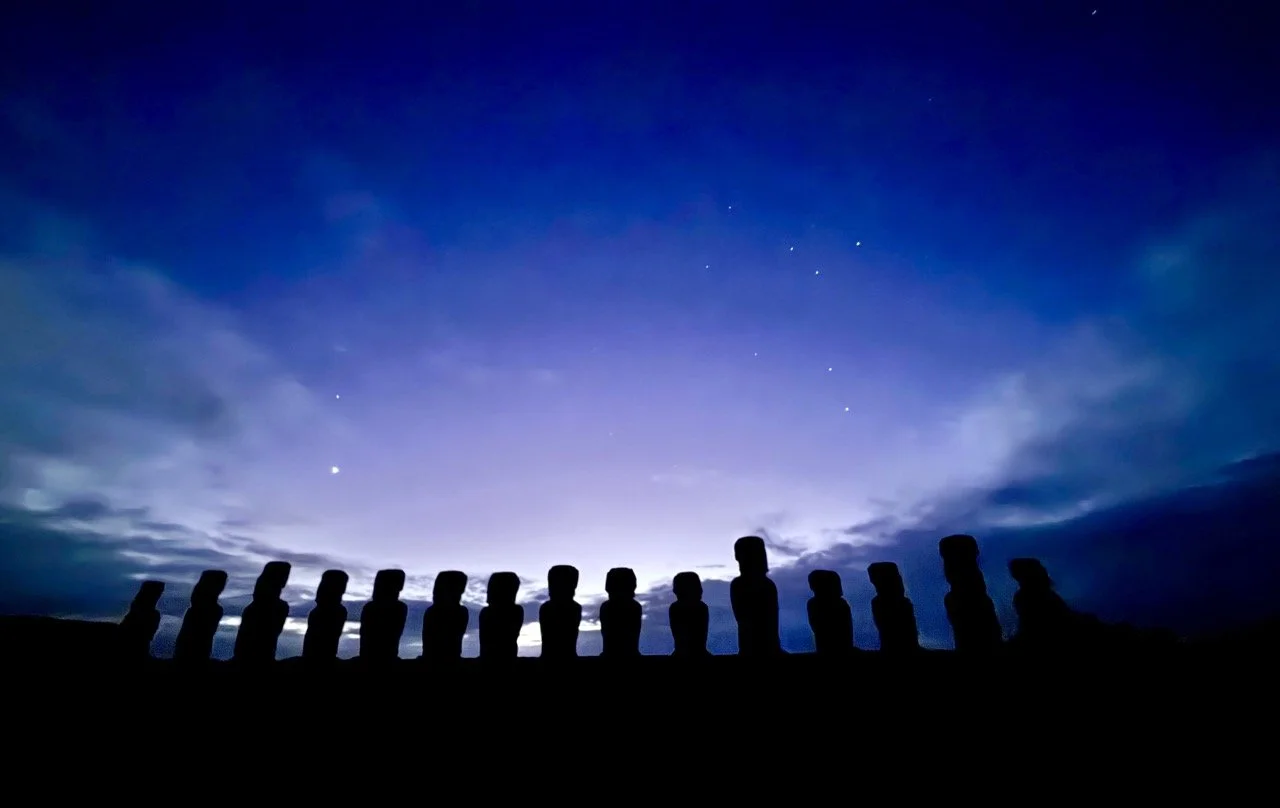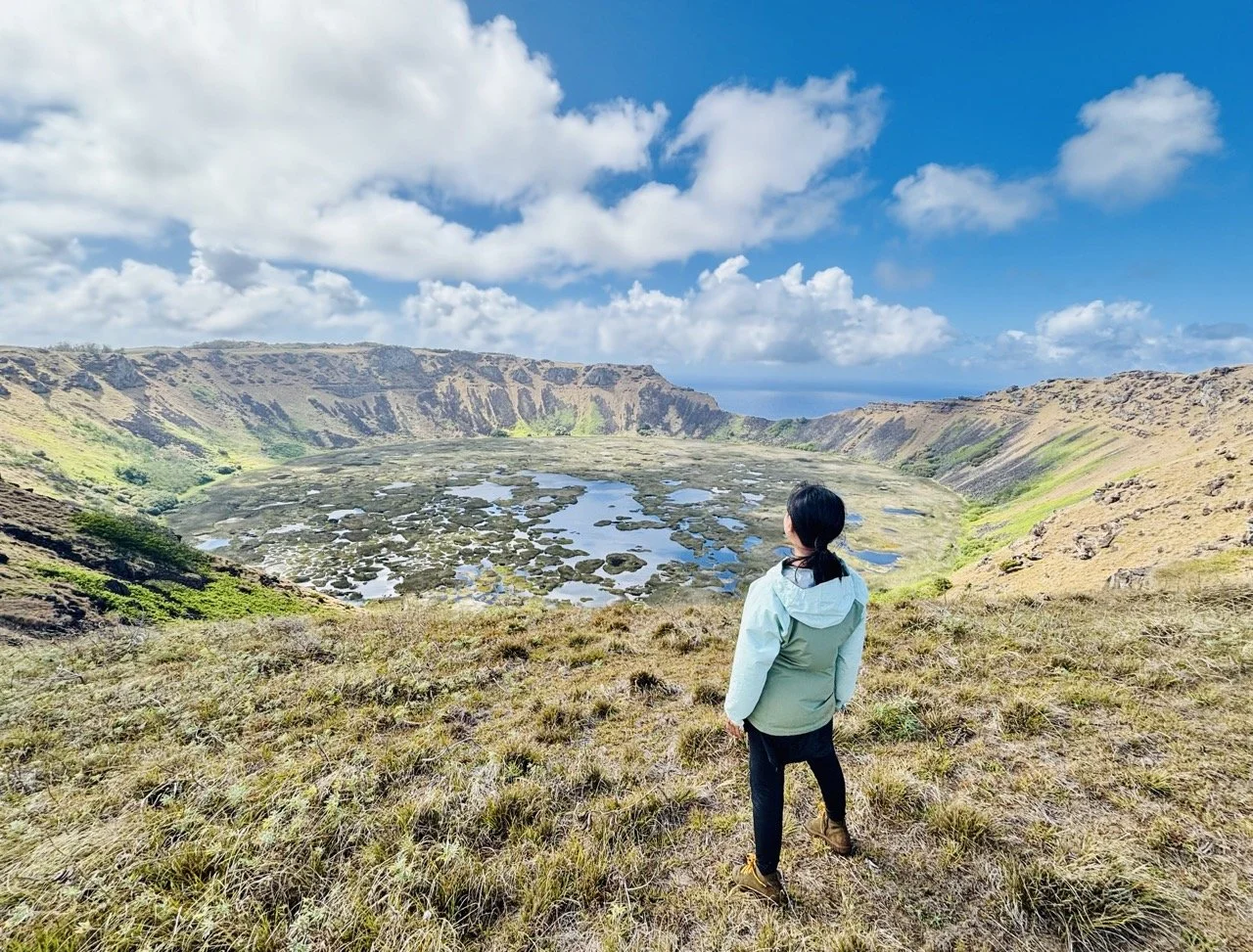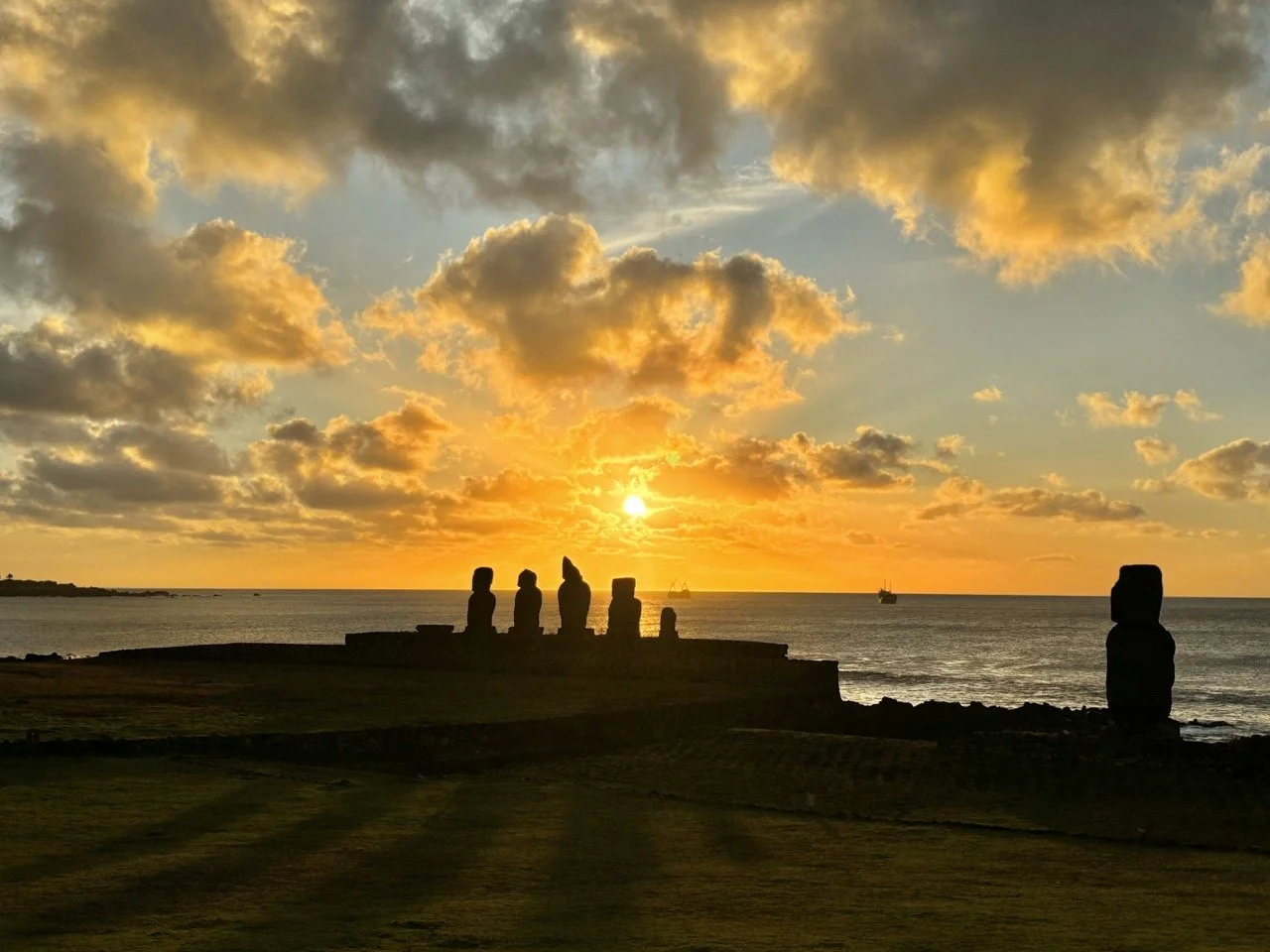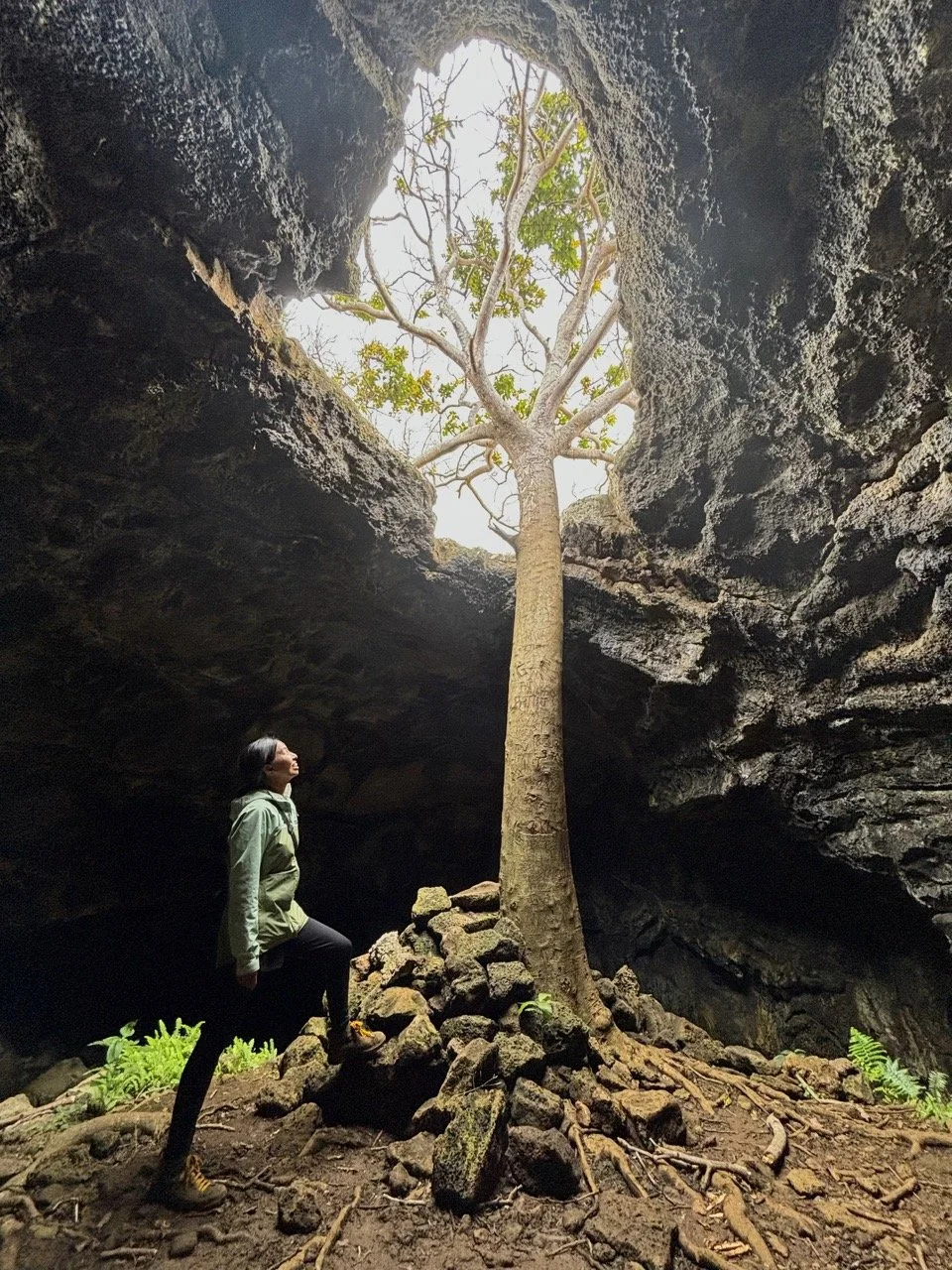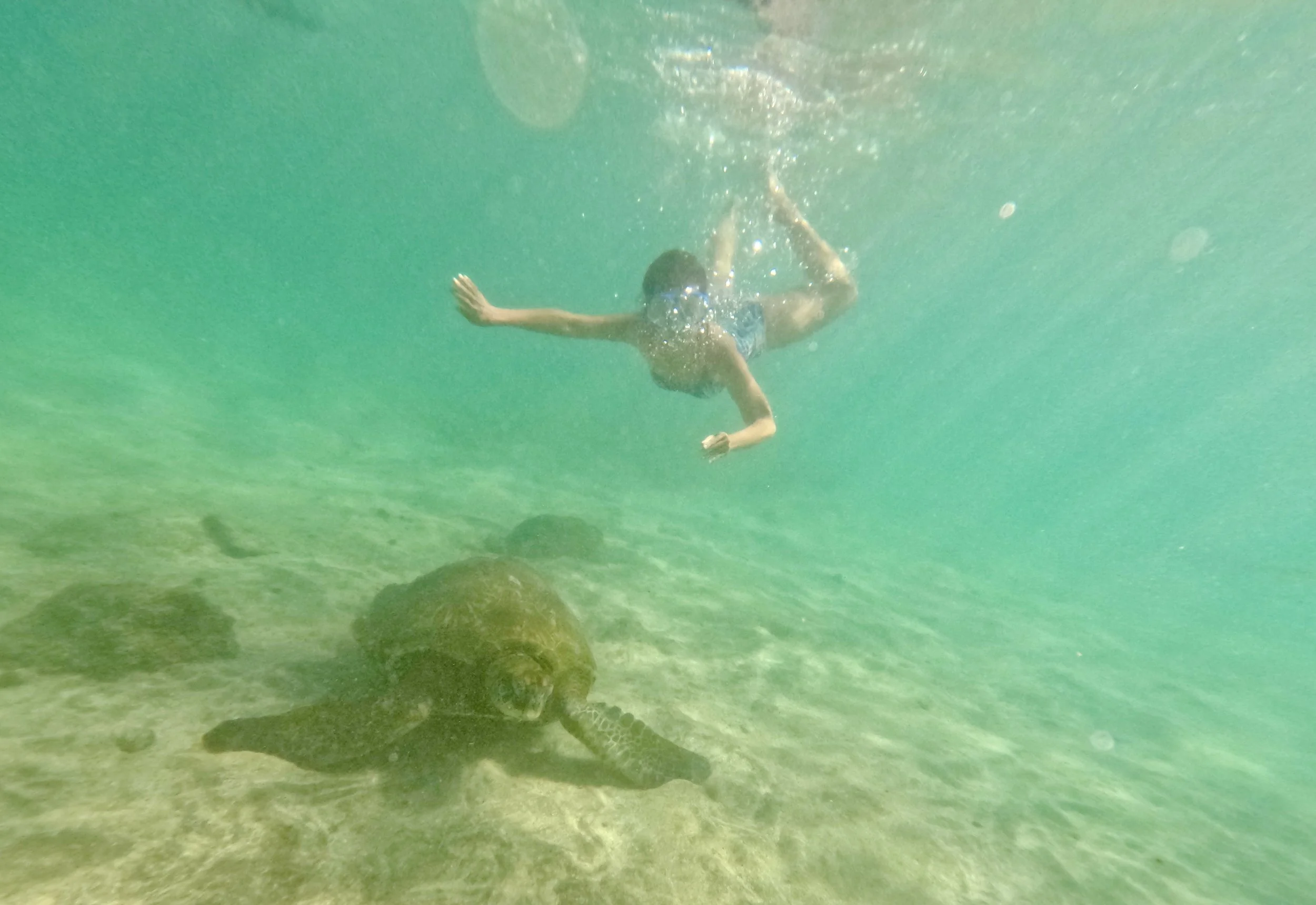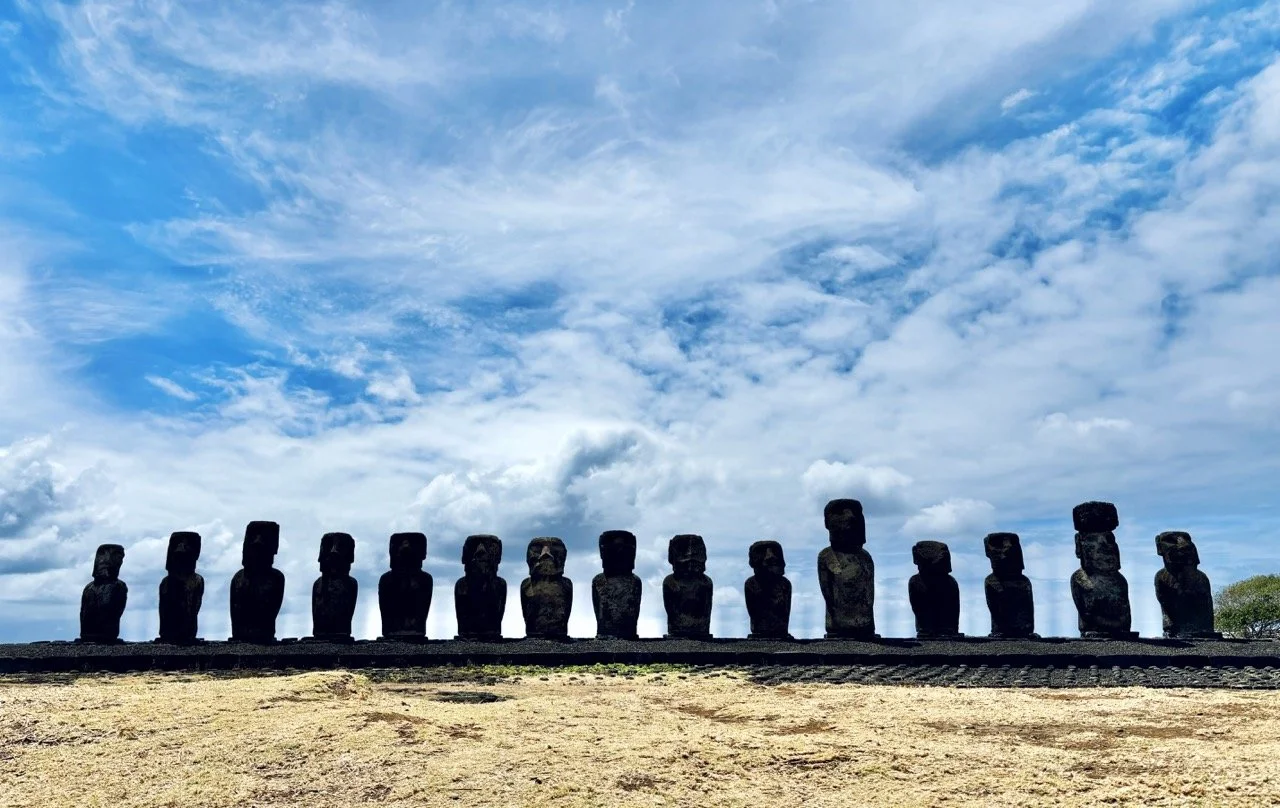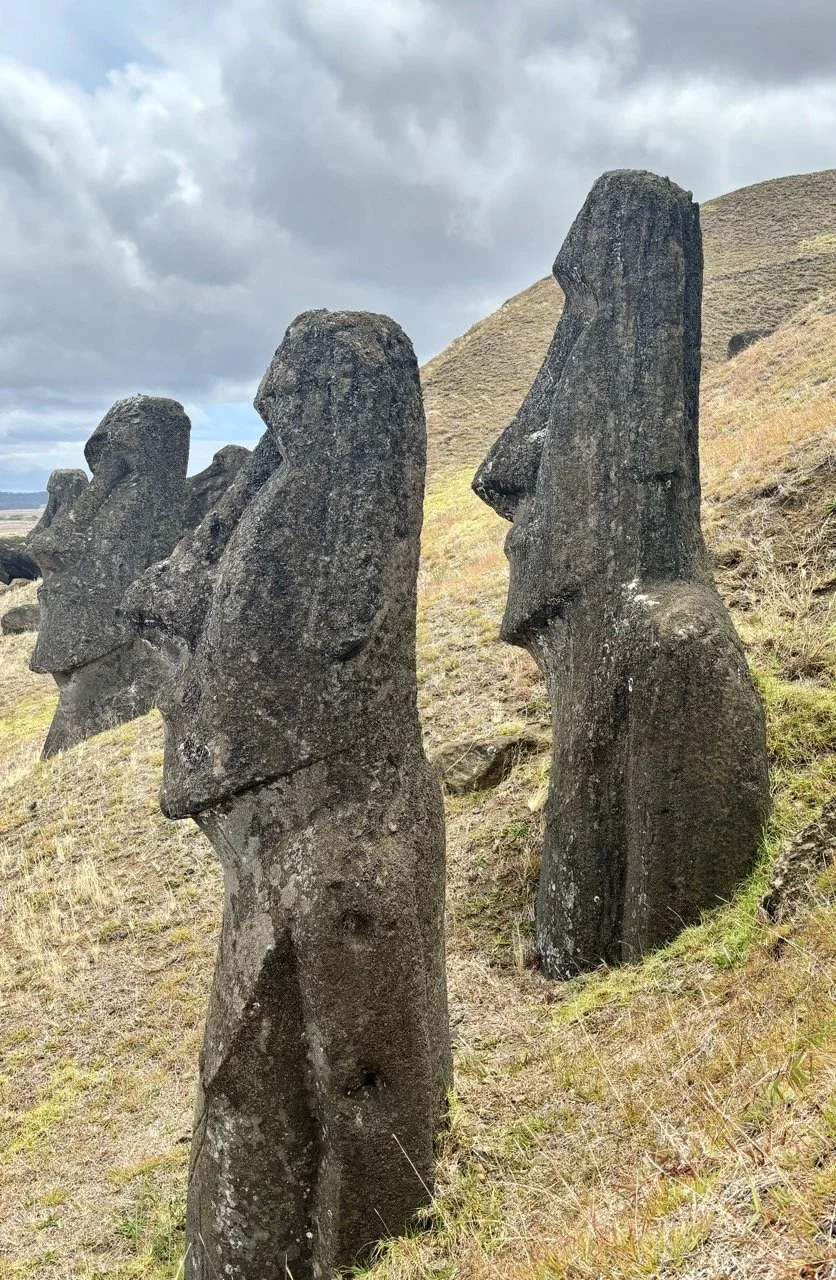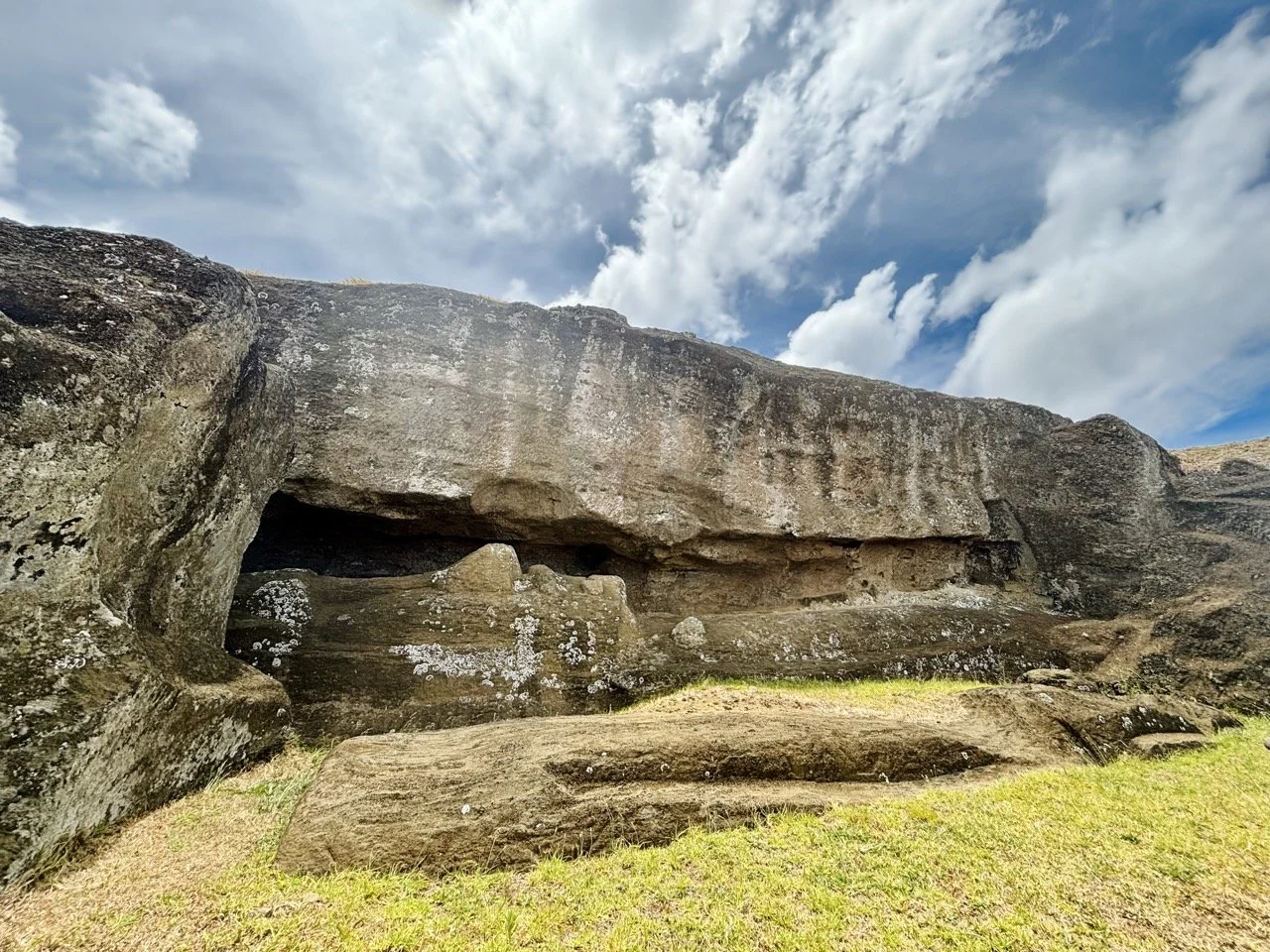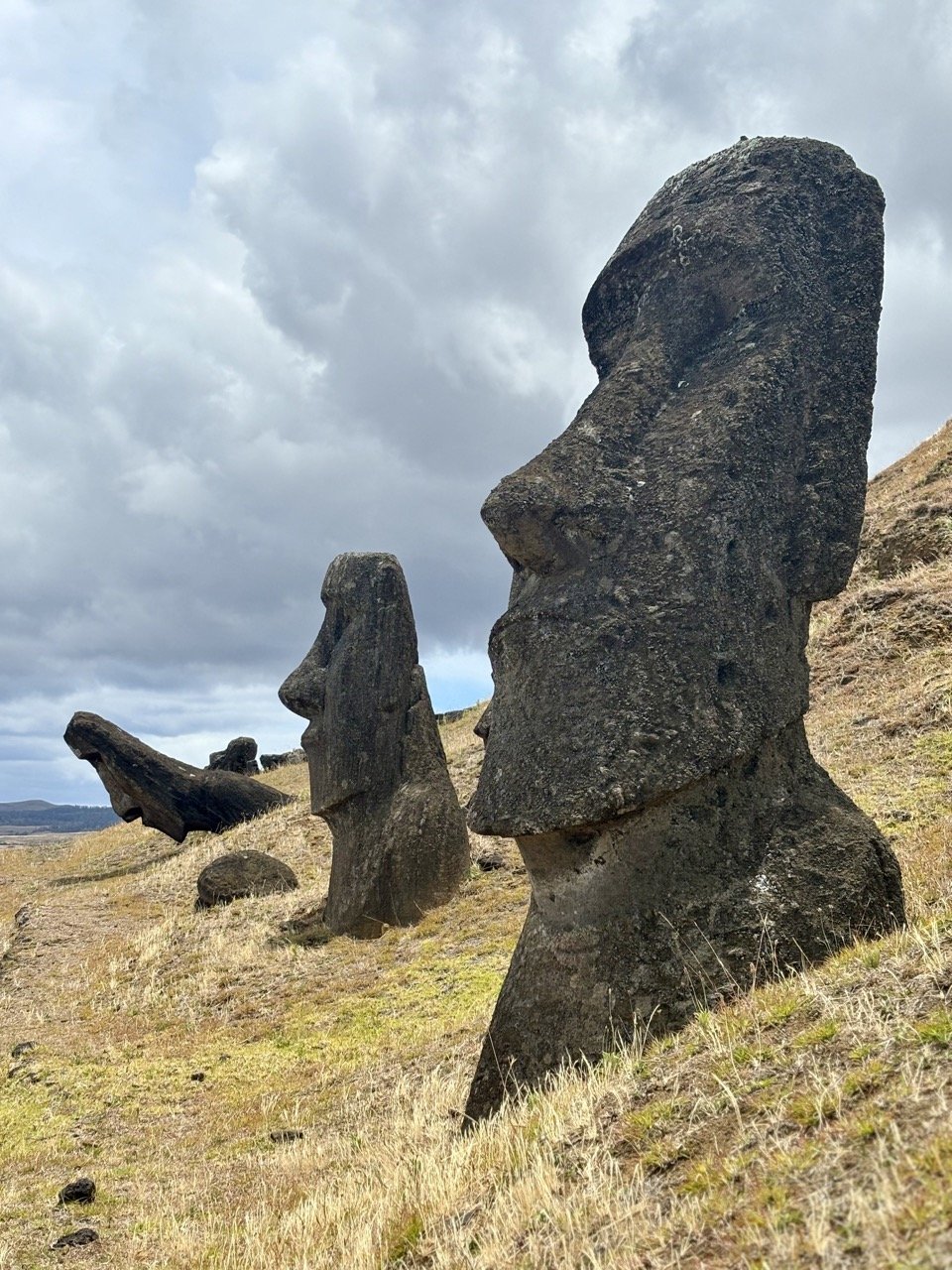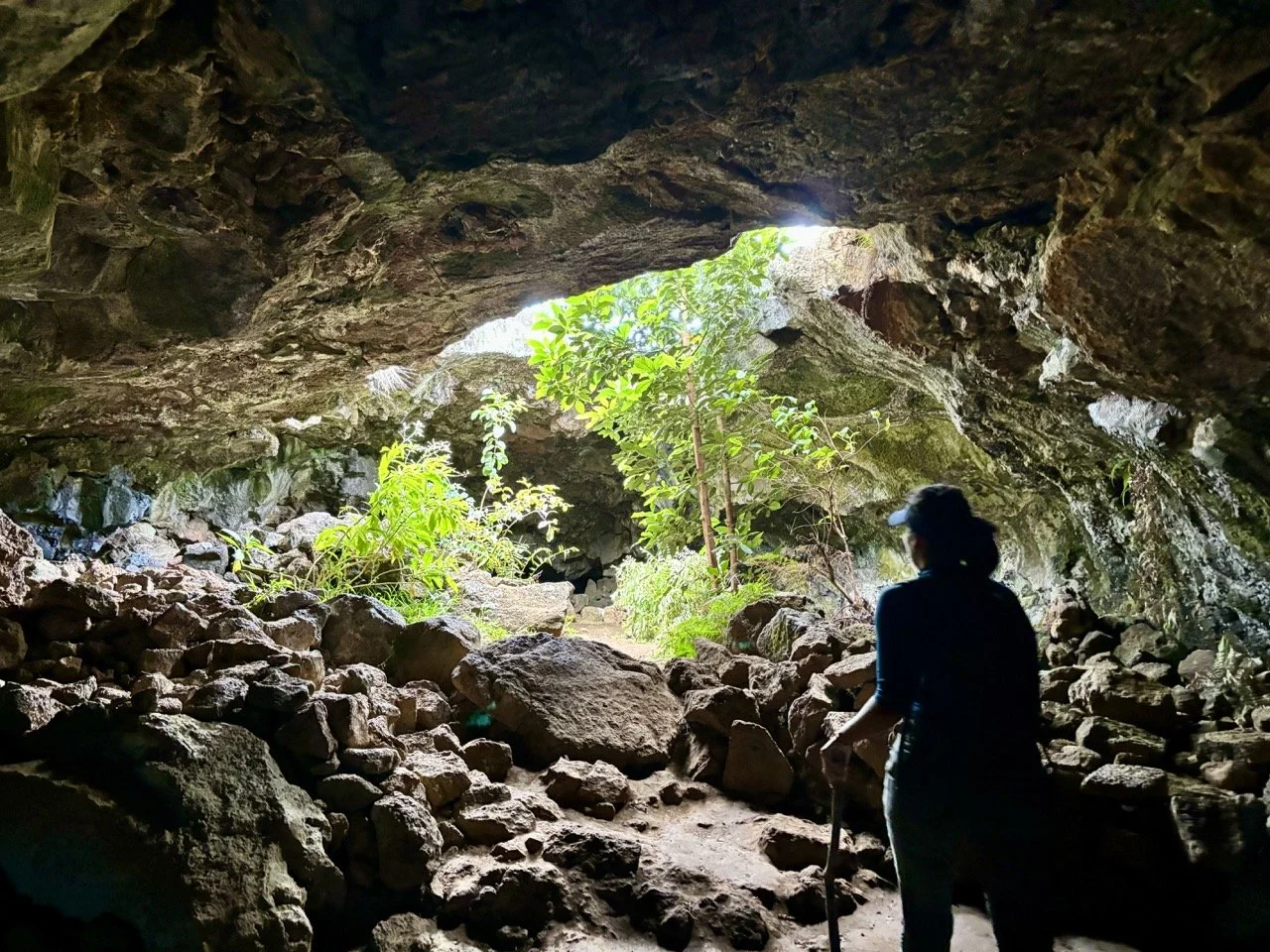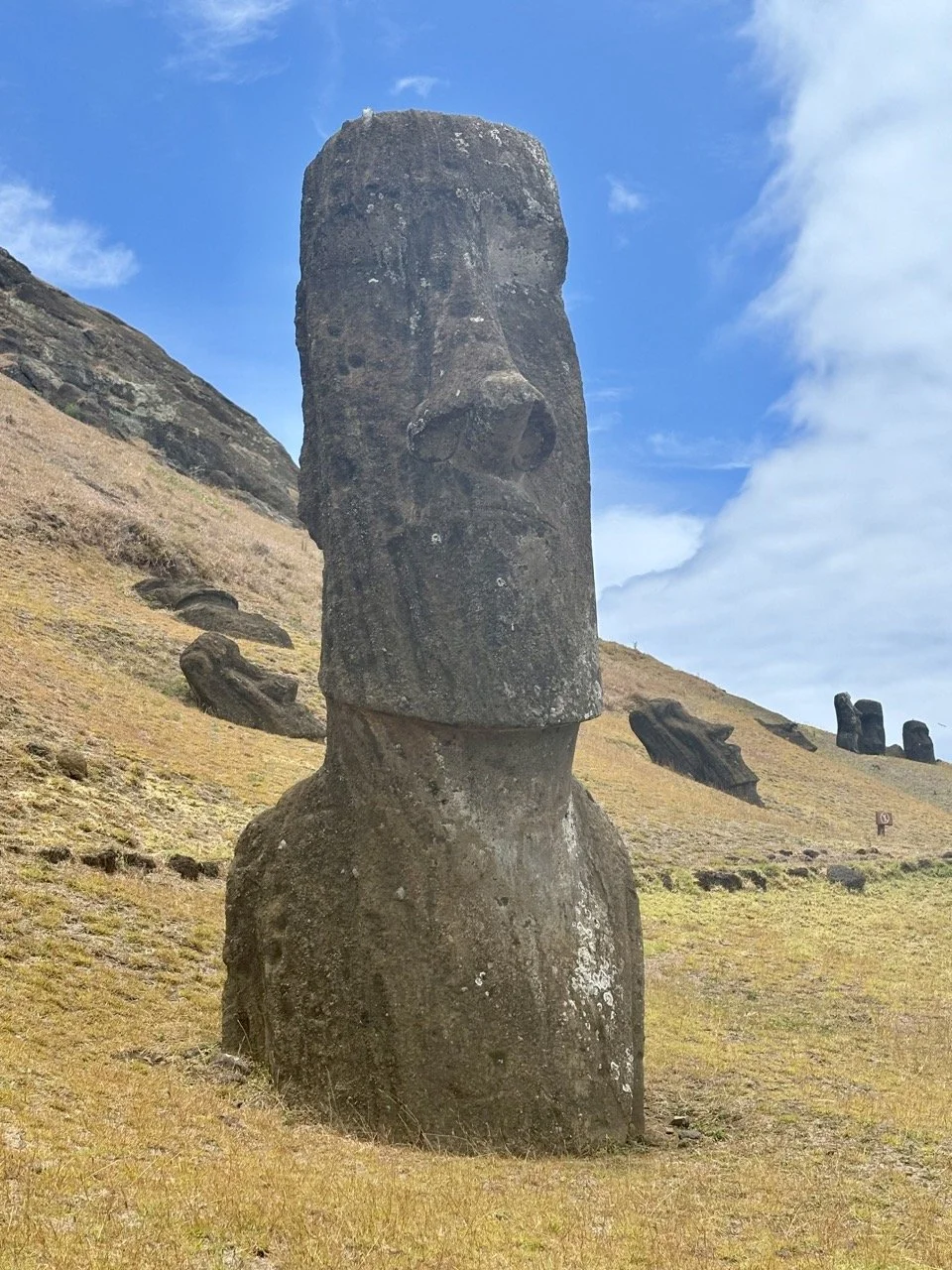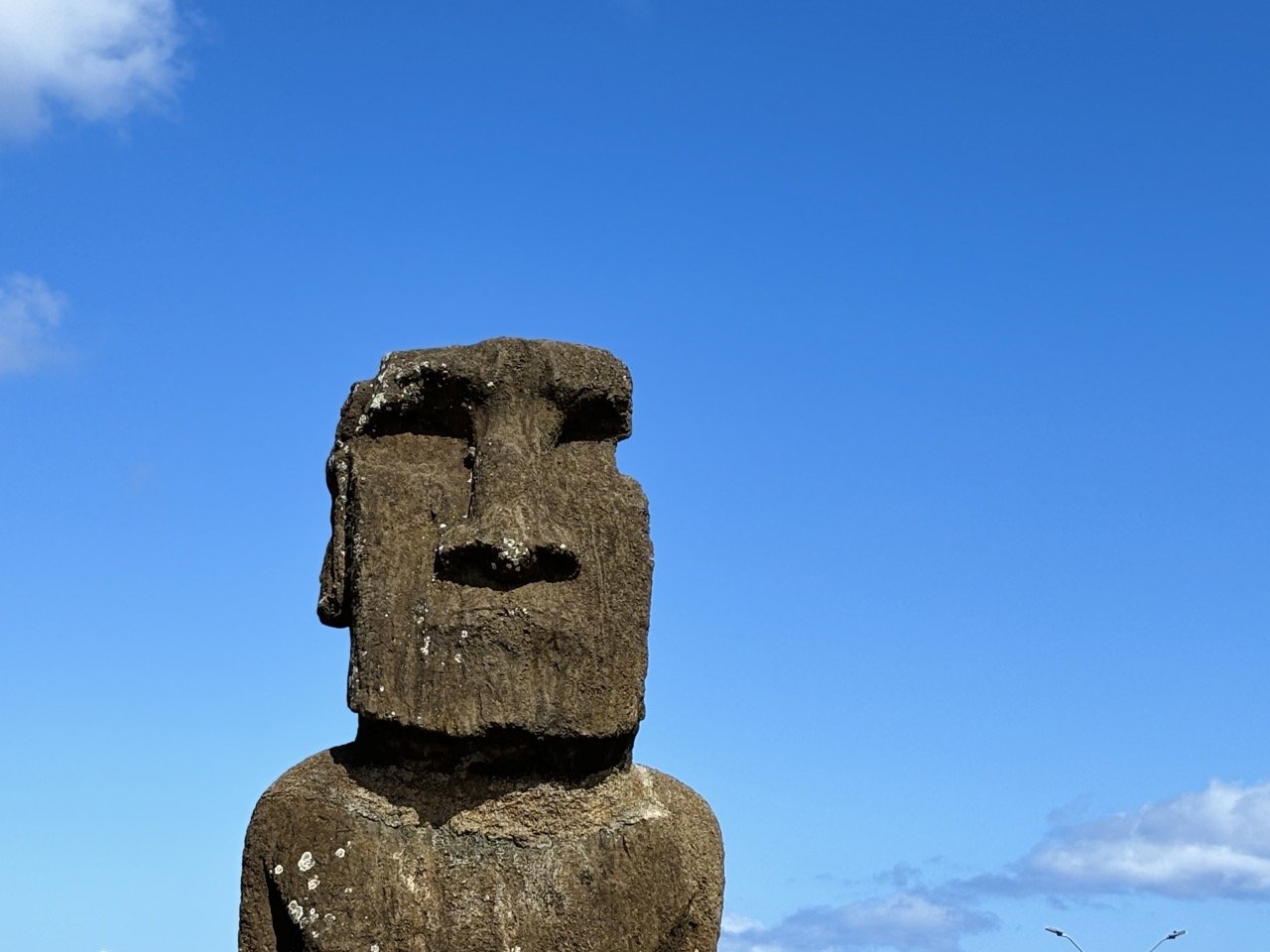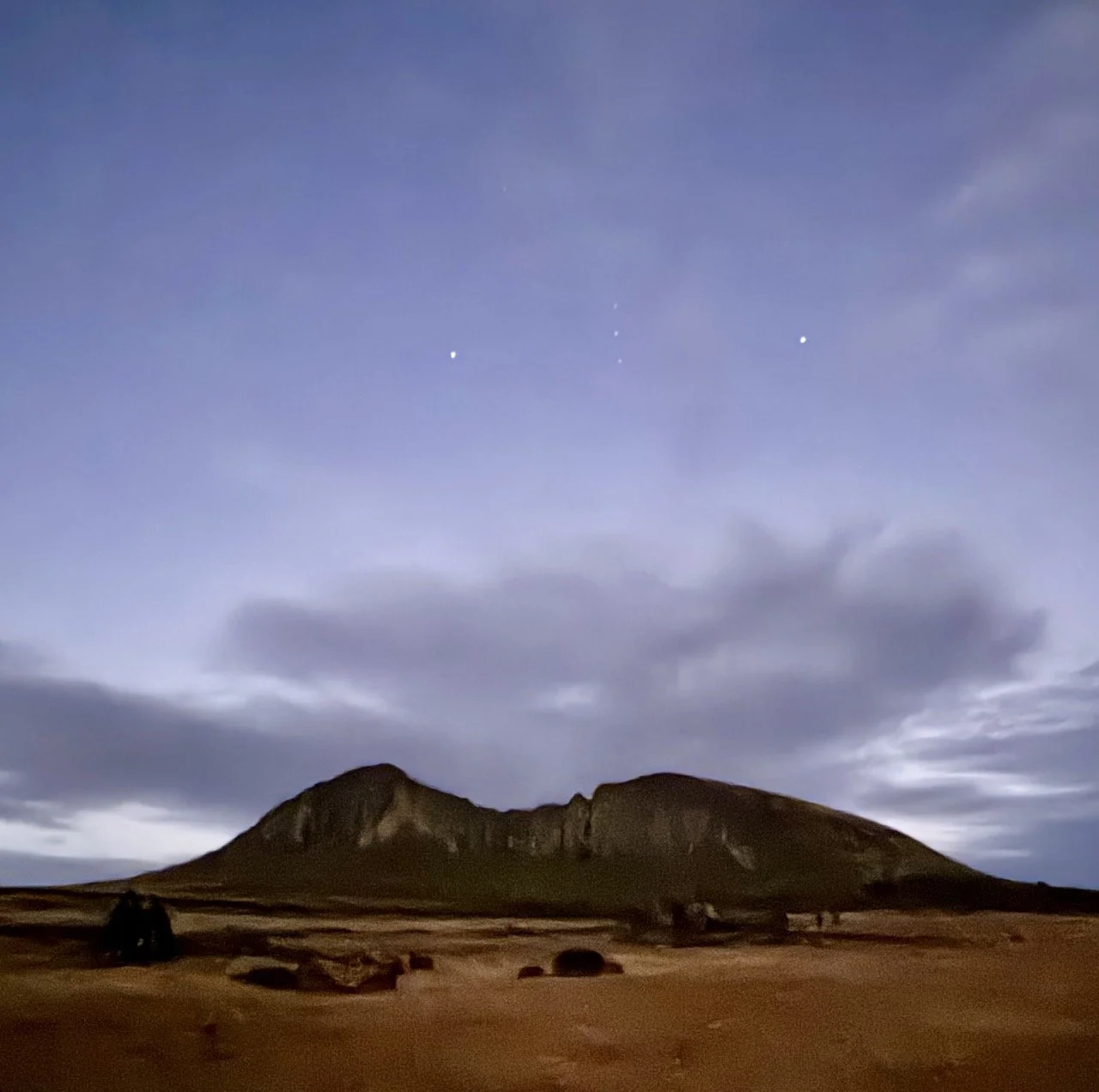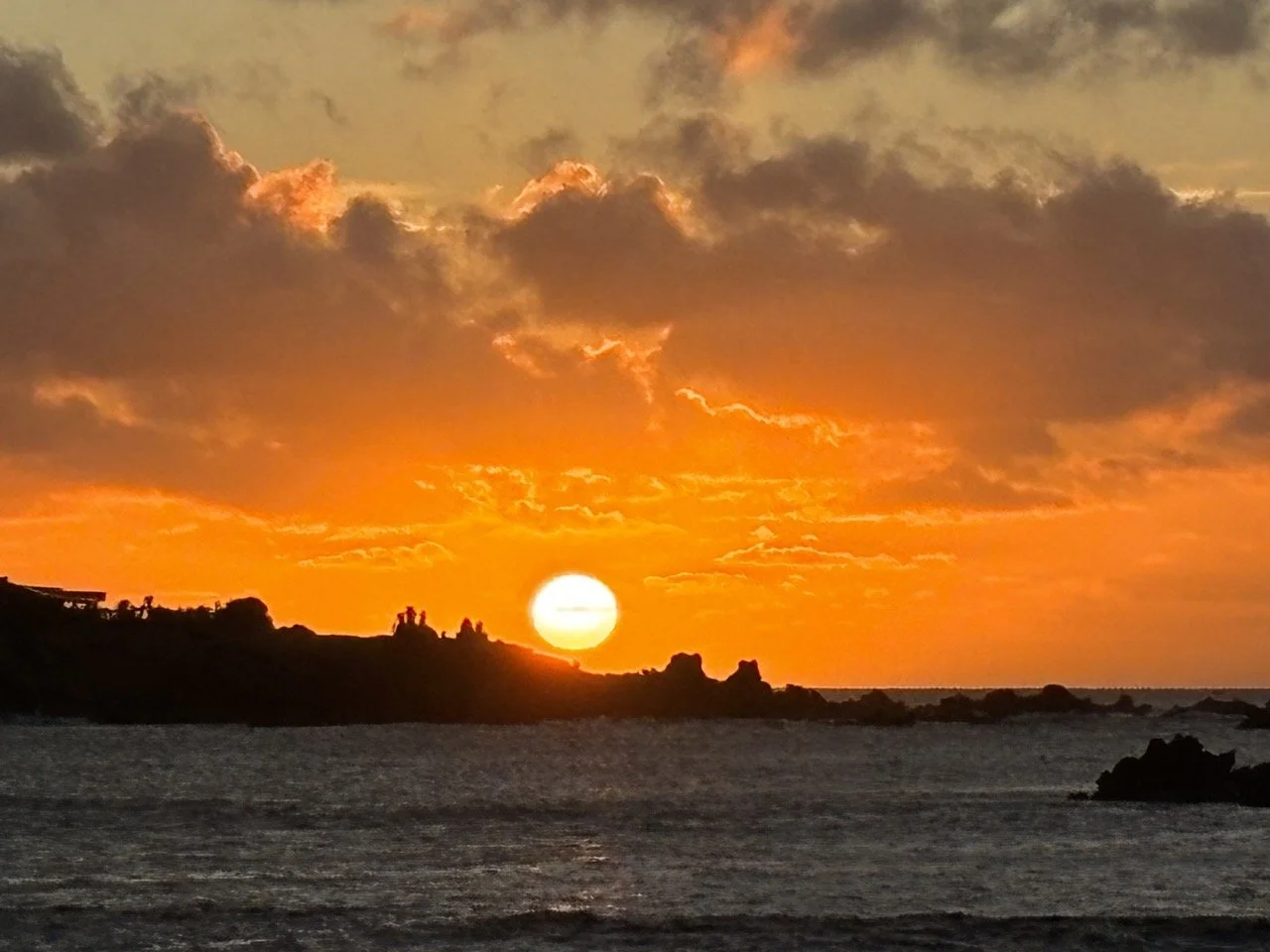【南美洲旅遊全攻略】復活節島自由行|探索摩艾石像|文化、交通、行程規劃、必訪景點和在地美食一次看 Exploring Easter Island: A Journey Through History and Culture
Check below for English version
🗿 復活節島必訪的五個理由+五個你不知道的冷知識
(Easter Island – 5 Reasons to Visit & 5 Fascinating Facts)
位於南太平洋深處的 復活節島(Easter Island / Isla de Pascua / Rapa Nui),是世界上最神秘、最遙遠的島嶼之一。這座小島不僅有傳奇的 摩艾石像(Moai Statues),還擁有壯麗的自然景觀與古老波利尼西亞文化。
以下帶你了解為什麼復活節島值得列入一生一次的旅行清單,以及那些讓人驚嘆的冷知識!
🌋 必訪的五個理由(5 Reasons to Visit Easter Island)
1️⃣ 世界上最神秘的摩艾石像(Moai Statues)
復活節島上共有近 900 座摩艾石像,每一尊都代表著古代首領或祖先的靈魂。
最著名的地點包括 Ahu Tongariki(15尊摩艾並列)與 Rano Raraku 火山(摩艾誕生地)。
這些石像面向島內,象徵守護村落,是人類學與考古學的奇蹟。
2️⃣ 被大自然包圍的壯麗風景
復活節島有火山口、黑沙灘、綠意草原與蔚藍海岸,是 自然攝影師的天堂。
Rano Kau 火山湖 與 Anakena Beach 都是不可錯過的景點。
你可以在一日之內,從火山頂看到海天一線,再在海灘上享受南太陽光。
3️⃣ 深厚的波利尼西亞文化(Rapa Nui Heritage)
復活節島的居民屬於 拉帕努伊人(Rapa Nui people),他們擁有獨特語言、音樂、舞蹈與信仰。
每年二月舉辦的 Tapati Festival(塔帕提節),是慶祝文化與傳統的重要節日。
遊客可體驗傳統舞蹈、身體彩繪與工藝製作。
4️⃣ 遙遠孤島的浪漫魅力
復活節島是 世界上最孤立的島嶼之一,距最近的陸地超過 3,500 公里。
正因這份遙遠與寧靜,使它成為情侶、冒險者與靜心旅行者的理想目的地。
夜晚的星空更是震撼無比,清晰可見銀河。
5️⃣ 文化與自然並存的世界遺產
復活節島全島被列入 UNESCO 世界文化遺產。
島上不僅有古老遺址,也有火山地貌與豐富生態。
旅人可同時體驗考古與自然探險的雙重樂趣。
復活節島五個冷知識(5 Fun Facts about Easter Island)
1️⃣ 摩艾石像其實「有身體」
很多人以為摩艾只有頭部,但考古挖掘證實,它們的身體埋在地下!
有些摩艾的身體高度超過 7 公尺,上面還刻有符號與紋飾。
2️⃣ 島名來自「復活節」那天
1722 年荷蘭探險家 雅各布·羅格文(Jacob Roggeveen) 在復活節當天發現該島,因此命名為 “Easter Island”。
當地原名為 Rapa Nui(拉帕努伊)。
3️⃣ 島上的樹木曾被完全砍光
古代島民為了搬運摩艾石像,大量砍伐樹木,導致 森林消失、環境崩壞。
這成為現代人反思「文明與生態」平衡的重要案例。
4️⃣ 復活節島有三座火山
島上由三座火山形成:Terevaka、Poike、Rano Kau。
島的地形呈三角形,火山地貌壯觀,是健行者的天堂。
5️⃣ 摩艾的眼睛「擁有靈魂」
傳說摩艾石像的眼睛由珊瑚與火山石製成,只有在安裝眼睛後,才被視為「活著」。
因此大多摩艾在戰亂時期被推倒或移除眼睛,象徵失去守護力量。
🌴 小結:為什麼復活節島值得一訪?
因為它是結合了 人類智慧、自然奇景與文化神話的孤島。
在這裡,你能:
看見摩艾石像背後的故事
感受遠離塵囂的寧靜
在世界盡頭看星星、聽浪聲
這不只是一趟旅行,而是一場 心靈與時間的對話。
復活節島的歷史
復活節島,當地人稱之為拉帕努伊(Rapa Nui),是世界上最偏遠的有人居住的島嶼之一,位於東南太平洋。該島由荷蘭探險家雅各布·羅格文(Jacob Roggeveen)在1722年的復活節星期天發現,因此得名「復活節島」。然而,該島的歷史可追溯到更早,當波利尼西亞航海者於公元1200年左右定居於此。
該島最著名的是其摩艾石像,這些由拉帕努伊人在1400年至1650年期間雕刻的巨型人形石像,以其巨大的頭部和莊嚴的表情而聞名。這些摩艾石像被認為代表了祖先的靈魂,具有重要的文化和宗教意義。摩艾石像最初被放置在稱為「阿胡」的石臺上,面向內陸,以保護村莊。
最受歡迎的拍照景點
復活節島(Easter Island)以其獨特的摩艾石像和壯麗的景觀吸引了眾多攝影愛好者。以下是一些最佳拍攝景點的詳細介紹:
1. 拉諾·拉拉庫火山(Rano Raraku)
拉諾·拉拉庫火山是復活節島上摩艾石像的主要採石場。這裡有許多未完成和已完成的摩艾石像,部分石像仍嵌在山坡中,呈現出獨特的景觀。
拍攝亮點:早晨和黃昏時分的光線最佳,可以捕捉到摩艾石像的陰影和細節。
2. 阿胡·唐加里基(Ahu Tongariki)
阿胡·唐加里基是復活節島上最大的石像平台,擁有15尊排列整齊的摩艾石像,是島上最壯觀的景點之一。
拍攝亮點:清晨的日出非常壯麗,摩艾石像的剪影與背後的朝陽形成強烈對比。
3. 阿胡·阿基維(Ahu Akivi)
這個祭壇上的七尊摩艾石像面向著大海,據說是為了指引波利尼西亞探險家回家的方向。
拍攝亮點:黃昏時分的日落景象非常美麗,石像與彩霞交相輝映。
4. 阿胡·塔哈伊(Ahu Tahai)
阿胡·塔哈伊位於海邊,靠近首府哈加羅阿(Hanga Roa)。這裡有三座不同大小的摩艾石像。
拍攝亮點:日落時分的光線柔和,可以拍攝到摩艾石像和海洋的美麗景象。
5. 奧隆戈村(Orongo Village)
奧隆戈村位於拉諾·考火山(Rano Kau)火山口邊緣,這裡是古老的鳥人儀式(Tangata Manu)舉行地。
拍攝亮點:從火山口俯瞰整個村莊和大海,景色壯麗,是俯瞰島嶼的絕佳位置。
6. 拉諾·考火山(Rano Kau)
這座火山擁有壯觀的火山口湖,四周環繞著茂密的植被,是自然美景的代表。
拍攝亮點:從火山口邊緣拍攝,可以將火山口湖與遼闊的太平洋同時納入鏡頭。
7. 阿納克納海灘(Anakena Beach)
這是島上唯一的沙灘,有著柔軟的白沙和清澈的海水。海灘旁還有幾尊摩艾石像。
拍攝亮點:日出或日落時的光線使沙灘和石像顯得特別迷人,是拍攝海灘與文化遺產的絕佳地點。
8. 普納帕烏(Puna Pau)
普納帕烏是製作摩艾石像紅色頭飾的採石場,這些紅色石頭與綠色背景形成強烈對比。
拍攝亮點:可以拍攝到鮮明的紅色石頭和島上的自然景觀,色彩對比鮮明。
復活節島的每一個景點都獨具特色,無論是壯觀的摩艾石像還是壯麗的自然景觀,都是攝影愛好者的夢幻之地。記得帶上足夠的拍攝設備和存儲卡,充分利用清晨和黃昏的光線,拍攝出最美的照片。
🗿 復活節島交通攻略|Easter Island 如何到達那裡(Rapa Nui Travel Guide)
想前往世界盡頭、親眼見證傳說中的 摩艾石像(Moai Statues) 嗎?
復活節島(Easter Island / Isla de Pascua / Rapa Nui) 是世界上最遙遠、最神秘的島嶼之一,雖然位於南太平洋中央,但其實交通方式相對簡單——只要提前規劃,就能順利抵達這座夢幻之島。
以下為你整理 如何前往復活節島的詳細交通方式、航班資訊與旅遊建議,讓你的 Rapa Nui 之旅輕鬆啟程!
✈️ 一、如何飛往復活節島(Easter Island)
🛫 主要航線與航空公司
LATAM Airlines 智利航空 是目前唯一營運復活節島航班的航空公司。
可從以下兩個城市搭乘直飛航班:
1️⃣ 智利聖地亞哥(Santiago de Chile, SCL) → 復活節島(Mataveri, IPC)
2️⃣ 秘魯利馬(Lima, LIM) → 復活節島(Mataveri, IPC)(偶爾航班)
💡 小提醒:
聖地亞哥出發是最常見、班次最穩定的選擇。
從利馬出發的航班不定期營運,需提前查詢時刻表。
🕓 二、航程時間與航班資訊
從聖地亞哥(Santiago)出發:
飛行時間:約 5.5 小時
每週約 4~7 班航班(依季節調整)
機型為波音 787 Dreamliner,提供舒適長途座位與餐飲服務。
從利馬(Lima)出發:
飛行時間:約 6 小時
通常為特定季節(如夏季或旅遊旺季)開放航班。
從塔希提島(Tahiti, PPT)出發:
部分年度 LATAM 也曾開放「塔希提–復活節島」航線(約 5 小時),但班次極少。
🛬 三、抵達機場:Mataveri International Airport(馬塔維里國際機場)
機場代碼:IPC
名稱:Mataveri International Airport(馬塔維里國際機場)
位置:位於 Hanga Roa 哈納羅阿鎮,是島上唯一的機場。
特色:
機場跑道由美國 NASA 設計,可兼作太空梭緊急降落用。
機場距離主要住宿區僅約 5~10 分鐘車程,出關即可感受島嶼氛圍。
🚗 四、從機場到住宿區的交通方式
接送服務(Hotel Transfer):
多數飯店與旅館會提供免費或付費的機場接送服務,建議提前預約。計程車(Taxi):
機場外有少量計程車,車資約 5~10 美元至 Hanga Roa 鎮區。租車(Car Rental):
若想自由探索整座島,可在機場租車(如 Insular Rent a Car、Oceanic Rent a Car)。
需持國際駕照,租金約每日 US$60 起。
📅 五、航班預訂與旅行小貼士
1️⃣ 提前預訂航班
由於復活節島航班有限,建議至少 提前 2~3 個月預訂,旺季(12月~2月)更要提早規劃。
2️⃣ 注意航班延誤或變動
因天氣與風向影響,航班可能臨時延誤,建議預留行程彈性。
3️⃣ 攜帶現金與物資
島上物資價格偏高,建議在聖地亞哥或利馬購買必需品。
4️⃣ 入島文件
自 2018 年起,外國遊客需填寫 Rapa Nui Entry Form(復活節島入境表),可在航班報到或機場現場辦理。
🌏 六、從智利本土延伸旅遊建議
若從 聖地亞哥出發,可順遊:
瓦爾帕萊索(Valparaíso):色彩斑斕的藝術港口城市
阿塔卡馬沙漠(Atacama Desert):世界最乾燥的沙漠
百內國家公園(Torres del Paine):壯麗的巴塔哥尼亞景觀
讓復活節島之旅成為南美洲探險的完美一環。
🧳 小結:飛往世界盡頭的夢想旅程
前往復活節島不僅是一趟航程,更像是一場穿越時空的冒險。
從聖地亞哥飛行 5.5 小時後,你將抵達一座充滿神秘能量、被太平洋包圍的孤島。
不論是看摩艾石像、在海灘放鬆,還是探索古老文明,
Easter Island 都將帶給你一生難忘的奇幻體驗。
🗿 復活節島行程推薦|三天&五天旅遊攻略(Easter Island Travel Itinerary)
想親眼見證神秘的摩艾石像、探索遺世獨立的南太平洋秘境嗎?
復活節島(Easter Island / Rapa Nui / Isla de Pascua) 是世界上最遙遠、最神秘的島嶼之一,以壯觀的 摩艾石像(Moai Statues) 和古老波利尼西亞文化聞名。
這裡提供兩種行程建議:
短期探索的 三天行程,以及深入體驗的 五天行程。
不論你是文化愛好者還是自然探險者,都能在此找到理想的路線!
🌴 三天行程建議(經典必訪路線)
🗓 第一天:哈納羅阿(Hanga Roa)文化探索日
行程重點:抵達後先熟悉當地氛圍,探索島上唯一城鎮 哈納羅阿(Hanga Roa)。
推薦景點:
塞巴斯蒂安·恩格勒人類學博物館(Museo Antropológico Sebastián Englert)
深入了解復活節島的歷史、摩艾石像的起源與島民文化傳說。哈納羅阿港(Hanga Roa Harbor):欣賞夕陽與海邊摩艾雕像,推薦在此享用晚餐。
旅遊小貼士:可安排入住當地家庭旅館(Guesthouse),體驗 Rapa Nui 的熱情文化。
🗓 第二天:拉諾·拉拉庫與東加里基探秘
行程重點:這一天是復活節島的核心探訪日,走訪最壯觀的考古遺址。
推薦景點:
拉諾·拉拉庫(Rano Raraku):摩艾石像的「出生地」,你可以看到半雕刻的巨型摩艾散落在火山坡上。
阿胡·東加里基(Ahu Tongariki):15 座整齊排列的摩艾石像面向太平洋,是島上最具代表性的地標。
阿納克納海灘(Anakena Beach):潔白沙灘與碧藍海水,旁邊還矗立著古老摩艾,非常適合放鬆與拍照。
🗓 第三天:奧龍戈與拉諾·考的神話世界
行程重點:探索島上古老祭祀遺跡與神話聖地。
推薦景點:
奧龍戈(Orongo):古代鳥人祭典(Birdman Cult)舉行的地方,擁有懸崖村落與壯麗海景。
拉諾·考(Rano Kau):休眠火山口內長滿茂密植被,是島上最壯觀的自然奇景。
阿胡·阿基維(Ahu Akivi):七座面向大海的摩艾,據傳是最早探險者的象徵。
🌋 五天行程建議(深入體驗版)
前三天可照以上路線,第四與第五天可延伸更深入的自然探索與文化體驗。
🗓 第四天:登頂特雷瓦卡(Terevaka)+洞穴藝術探秘
上午行程:
徒步登上特雷瓦卡(Terevaka):全島最高點,360° 島嶼全景盡收眼底,是絕佳的拍照與賞景地點。
下午行程:
安娜·凱唐加塔洞穴(Ana Kai Tangata):觀賞史前岩畫與祭祀遺跡,感受 Rapa Nui 的神秘能量。
🗓 第五天:Ovahe Beach 放鬆與浮潛日
行程重點:在行程最後,選擇輕鬆的節奏享受島上自然之美。
奧瓦赫海灘(Ovahe Beach):粉紅色火山沙灘、透明海水,非常適合浮潛與日光浴。
可順道拜訪當地手工藝市場,選購木雕摩艾或波利尼西亞風飾品。
🧭 實用旅遊資訊
最佳旅遊季節:11月至3月氣候最溫暖,適合戶外活動與拍照。
交通方式:島上可租汽車、機車或單車,自由探索最方便。
住宿地點:建議選擇哈納羅阿(Hanga Roa)作為基地,距離景點與餐廳最便利。
旅遊時間建議:三天適合初次造訪;若想深度體驗自然與文化,建議停留五天以上。
🗿 復活節島美食推薦|Easter Island 餐廳指南與必吃料理
復活節島(Easter Island / Rapa Nui)不僅有神秘的摩艾石像,也有令人驚豔的美食文化。
雖然島上規模不大,但在主要城鎮 哈納羅阿(Hanga Roa) 仍能找到各種風味餐廳,從海鮮、智利菜到融合波利尼西亞料理,讓旅人能在南太平洋的遙遠角落享受美味。
以下是精選的 復活節島推薦餐廳,附上必點餐點、價格範圍、推薦理由與交通資訊。
🍴 1️⃣ Te Moana Restaurant
位置:Hanga Roa 港口旁|景觀海景餐廳
必點餐點:新鮮生魚片(Ceviche)、烤章魚(Grilled Octopus)、龍蝦(Rapa Nui Lobster)
價格範圍:約 $$~$$$(每人約 US$25~45)
推薦原因:
是復活節島上最著名的海景餐廳之一。
使用本地漁獲,特別推薦 Rapa Nui 龍蝦與海鮮拼盤,口感鮮甜。
傍晚時分可邊用餐邊欣賞太平洋日落,是浪漫晚餐首選。
交通指南:
位於哈納羅阿港(Hanga Roa Harbor)步行區內,多數旅館步行 5~10 分鐘即可抵達。
SEO 關鍵字:復活節島餐廳推薦、Easter Island seafood、Te Moana Hanga Roa、復活節島海鮮
🥗 2️⃣ Tataku Vave
位置:哈納羅阿海邊|隱藏版海景餐廳
必點餐點:鮪魚牛排(Tuna Steak)、海鮮拼盤(Seafood Platter)、Ceviche
價格範圍:約 $$~$$$(US$20~40)
推薦原因:
在地人最愛的餐廳之一,以 現撈魚類 和 超大份量 聞名。
夕陽時段氣氛極佳,可邊用餐邊看海浪拍岸。
餐點新鮮、價格實惠,是遊客與當地居民都推薦的隱藏美食。
交通指南:
從哈納羅阿鎮中心開車約 5 分鐘或步行 15 分鐘即可抵達。
建議傍晚前抵達以卡位看夕陽的座位。
SEO 關鍵字:Tataku Vave、Hanga Roa 美食、復活節島必吃、Easter Island sunset restaurant
🍕 3️⃣ Haka Honu
位置:Hanga Roa 中心街區|融合餐酒吧風格
必點餐點:海鮮披薩(Seafood Pizza)、Rapa Nui Burger、Tuna Tartare
價格範圍:約 $$(US$15~30)
推薦原因:
年輕旅人與背包客最愛的 輕食與飲品餐廳。
氣氛熱鬧、音樂輕快,適合與朋友聚餐或放鬆小酌。
披薩與當地鮮魚搭配的創意料理值得一試。
交通指南:
位於哈納羅阿主要街道(Atamu Tekena Road)上,從任何旅館步行 5 分鐘即可。
SEO 關鍵字:Haka Honu、Easter Island pizza、復活節島美食推薦、Hanga Roa 餐廳
🍤 4️⃣ La Kaleta Restaurant
位置:Hanga Roa 港邊|人氣海鮮小館
必點餐點:Ceviche 生魚片、香煎鮪魚(Pan-Seared Tuna)、章魚沙拉
價格範圍:約 $$~$$$(US$25~40)
推薦原因:
以 每日現撈漁獲 製作新鮮餐點,食材簡單但味道驚豔。
餐廳氣氛悠閒,適合午餐或海邊放鬆的午後時光。
份量十足、服務親切,是許多遊客回訪率高的餐廳。
交通指南:
位於哈納羅阿港邊,距離 Te Moana 走路僅 2~3 分鐘。
SEO 關鍵字:La Kaleta、Easter Island seafood restaurant、復活節島午餐、Hanga Roa 港口美食
🍰 5️⃣ Mikafé
位置:Hanga Roa 中心|人氣咖啡廳與甜點店
必點餐點:拿鐵咖啡(Latte)、百香果蛋糕、熱帶水果冰沙
價格範圍:約 $(US$8~15)
推薦原因:
當地最受歡迎的 早午餐與甜點咖啡館。
咖啡豆採用智利與當地混合烘焙,口感香濃。
甜點新鮮、環境清新,非常適合旅途中的下午休息。
交通指南:
位於哈納羅阿主街區,距離主要住宿區步行 5 分鐘。
SEO 關鍵字:Easter Island coffee、復活節島咖啡廳、Hanga Roa 早餐、Mikafe Rapa Nui
🌺 小貼士與旅遊建議
餐廳營業時間:大多數餐廳中午 12:00~15:00、晚餐 18:00~22:00。部分店家週日公休。
付款方式:島上部分餐廳僅收現金(智利披索或美元),建議攜帶足夠現金。
建議預約:熱門餐廳如 Te Moana 與 Tataku Vave 晚餐時段常客滿,建議提前訂位。
租車自駕最方便:島上計程車較少,建議租車或騎機車探索。
傳統美食、舞蹈、活動和節日
復活節島的文化充滿了傳統習俗:
傳統美食:Po’e(香蕉或南瓜布丁),Umi(傳統地下烤爐用來烹調肉類和蔬菜),以及新鮮的海鮮如金槍魚和龍蝦。
傳統舞蹈:拉帕努伊舞蹈,稱為Hoko,是在各種儀式和節日中表演的充滿活力和熱情的舞蹈。
節日:每年二月舉行的Tapati Rapa Nui節,是為期兩週的拉帕努伊文化慶祝活動,包含傳統運動、音樂、舞蹈和服裝比賽。
與台灣的語言歷史聯繫
拉帕努伊語是一種波利尼西亞語言,屬於南島語系,包括夏威夷語、毛利語,甚至台灣的某些語言。這種語言聯繫顯示了波利尼西亞人古代的遷徙和定居模式,他們被認為從東南亞,包括可能的台灣,穿越太平洋廣袤的距離,最終定居在如復活節島這樣的地方。
🗿 摩艾石像的故事|復活節島的神秘守護者(The Story of the Moai Statues on Easter Island)
在世界盡頭的南太平洋,有一座與世隔絕的火山島——復活節島(Easter Island / Isla de Pascua / Rapa Nui)。
這座島上散落著近 900 座摩艾石像(Moai Statues),它們靜靜地矗立在草原與海岸之間,千百年來注視著島嶼與天空,成為世界上最神秘的文化象徵之一。
🌋 摩艾石像的起源(Origin of the Moai Statues)
根據考古與拉帕努伊(Rapa Nui)傳說,摩艾石像代表著已逝祖先的化身。
這些巨像被視為擁有靈性與力量的存在,能將祖先的精神力量——「馬納(mana)」 投射至部落,守護家園與族人。
摩艾的製作年代約介於 西元 1250 年至 1500 年 之間,由當地的雕刻師在 拉諾·拉拉庫火山(Rano Raraku Volcano) 的凝灰岩採石場中雕刻完成。
拉帕努伊人相信,祖先的靈魂會居住在摩艾之中,透過他們的眼睛守護島上的村落。
🪨 摩艾石像的建造與運輸(How the Moai Were Built and Moved)
每一座摩艾平均高約 4 公尺、重達 12 公噸,最大的甚至超過 70 噸!
這些石像由整塊火山岩雕成,再運送至沿岸的**阿胡(Ahu,祭壇平台)**上。
至於拉帕努伊人如何運送這些巨石?
考古學家提出多種理論:
以 原木滾軸 或 繩索搖擺方式(Walking Theory) 將摩艾「走」到目的地;
使用木製雪橇與人力滑移運輸。
不論是哪種方式,都展現了拉帕努伊人卓越的 工程智慧與合作精神。
摩艾石像的象徵意義(Symbolism and Spiritual Power)
摩艾不僅是雕像,更是 精神與信仰的象徵。
它們面向島內(而非海洋),象徵祖先守護著族人的土地與家園。
摩艾的「眼睛」由白色珊瑚與黑曜石製成,據說當眼睛被安裝後,石像就會「活過來」,擁有靈魂與守護力量。
這種精神能量被稱為 馬納(mana) —— 是波利尼西亞文化中代表「神聖力量」的概念。
摩艾石像的倒塌與文明變遷(The Fall of the Moai)
在 17 世紀左右,復活節島社會出現內部衝突與資源枯竭。
森林被過度砍伐、農地退化,導致部落間爭奪資源,最終引發戰爭。
在這段時期,許多摩艾被推倒或摧毀,象徵祖先失去力量與社會秩序的崩壞。
這場危機改變了拉帕努伊人的信仰體系,從崇拜祖先的摩艾文化,轉向以「鳥人崇拜(Tangata Manu)」為核心的新宗教。
今日的摩艾與保育行動(Preserving the Moai Today)
如今,摩艾石像被列入 UNESCO 世界文化遺產,由 拉帕努伊國家公園(Rapa Nui National Park) 管理。
考古學家與當地社群持續修復與保護摩艾,並推廣文化教育,讓世界了解這段古老的智慧與歷史。
前往復活節島旅遊時,旅人可在以下景點親眼見證摩艾的壯麗:
Ahu Tongariki:15尊摩艾並列的經典景象
Rano Raraku:摩艾的誕生地
Ahu Akivi:唯一面向大海的摩艾群
🌺 小結:摩艾石像的永恆傳說
摩艾石像不僅是石頭雕塑,更是 人類信仰、尊敬祖先與文化延續的象徵。
它們代表著拉帕努伊人的靈魂,也提醒著世人——文明的榮耀與環境的平衡密不可分。
當你站在太平洋海風中,凝視這些千年巨像,你不只是看到歷史,更是感受到人類對「信念與永恆」的追尋。
結論
復活節島是一個融合了歷史、文化和自然之美的獨特目的地。從令人敬畏的摩艾石像和拉帕努伊人的豐富傳統,到壯觀的景觀和原始的海灘,該島提供了一個真正難忘的體驗。無論您是歷史愛好者、攝影愛好者,還是僅僅尋找一個異國情調的度假地,復活節島都有其特殊之處。
延伸閱讀:南美洲完整旅遊攻略
關於作者|Toto Kuo
大家好,我是 Toto Kuo,來自台灣,目前定居在浪漫的 希臘聖托里尼。身為一名熱愛探索的攝影師與旅人,我曾以背包客的身分走遍 超過 80 個國家,並曾旅居 加拿大、紐約、巴黎,且在 4 個國家打工度假,用旅行的方式體驗世界的多元文化。
目前,我與希臘先生在聖托里尼一起經營一家 希臘餐廳 Karma 與 聖托里尼婚紗攝影工作室,同時把我最熱愛的攝影、旅行、美食與文化分享給更多人。無論是 希臘小島推薦、聖托里尼完整攻略、在地美食推薦、咖啡館探訪、旅遊攝影指南,和自由行的行程安排,我都會透過文字與影像帶你親身感受。
The History of Easter Island
Easter Island, known as Rapa Nui to its indigenous people, is one of the most remote inhabited islands in the world, located in the southeastern Pacific Ocean. The island was named "Easter Island" by Dutch explorer Jacob Roggeveen, who encountered it on Easter Sunday in 1722. However, the island's history dates back much further, to when Polynesian navigators settled there around 1200 AD.
The island is most famous for its Moai statues, which were carved by the Rapa Nui people between 1400 and 1650 AD. These monolithic human figures, with their oversized heads and solemn expressions, are believed to represent ancestral spirits and hold significant cultural and religious importance. The Moai were originally placed on stone platforms called "ahu" and faced inland to watch over the villages.
The Most Popular Photo Shooting Spots
Easter Island offers numerous breathtaking locations perfect for photography. Here are some must-visit spots:
Rano Raraku: Known as the quarry where most of the Moai were carved, this site features numerous unfinished statues still embedded in the rock.
Ahu Tongariki: The largest Ahu on the island with 15 standing Moai, offering a dramatic and iconic view, especially at sunrise.
Ahu Akivi: Unlike other Moai, these seven statues face the ocean, said to represent the seven explorers sent to find the island.
Anakena Beach: A beautiful white-sand beach with restored Moai, perfect for combining cultural exploration with relaxation.
Orongo: A ceremonial village located on the rim of the Rano Kau volcano, offering stunning views and insights into the Birdman cult.
How to Get There
Easter Island can be reached by air, with LATAM Airlines operating regular flights from Santiago, Chile, and occasionally from Lima, Peru. The Mataveri International Airport (IPC) is the island's only airport, and the flight from Santiago takes about 5.5 hours. Given its remote location, planning and booking flights in advance is essential.
Suggested Itineraries
3-Day Itinerary
Day 1: Arrive and explore Hanga Roa, the island’s main town. Visit the Museo Antropológico Sebastián Englert to learn about the island's history.
Day 2: Visit Rano Raraku, Ahu Tongariki, and Anakena Beach.
Day 3: Explore Orongo, Rano Kau, and Ahu Akivi.
5-Day Itinerary
Days 1-3: Follow the 3-day itinerary.
Day 4: Hike to Terevaka, the highest point on the island, for panoramic views. In the afternoon, visit the cave paintings at Ana Kai Tangata.
Day 5: Relax and enjoy the beach at Ovahe or snorkel in the pristine waters.
Traditional Dish, Dance, Events, and Festivals
Easter Island’s culture is rich with traditional practices:
Traditional Dishes: Po’e (a type of banana or pumpkin pudding), Umi (a traditional underground oven used to cook meats and vegetables), and fresh seafood like tuna and lobster.
Traditional Dance: The Rapa Nui dance, known as Hoko, is a vibrant and energetic dance performed during various ceremonies and festivals.
Festivals: The Tapati Rapa Nui Festival, held annually in February, is a two-week celebration of Rapa Nui culture featuring traditional sports, music, dance, and costume competitions.
The Language History that Connects with Taiwan
The Rapa Nui language is a Polynesian language, part of the Austronesian language family, which includes Hawaiian, Maori, and even some languages spoken in Taiwan. This linguistic connection points to the ancient migration and settlement patterns of the Polynesian people, who are believed to have traveled vast distances across the Pacific Ocean from Southeast Asia, possibly including Taiwan, to settle in places like Easter Island.
The Story About Moai
The Moai statues are perhaps the most enigmatic aspect of Easter Island. Each Moai represents a deceased ancestor and was believed to project mana (spiritual power) to protect the community. They were transported from the quarry at Rano Raraku to their ahu using a combination of logs, ropes, and human labor, a feat that showcases the ingenuity and cooperative spirit of the Rapa Nui people. The toppling of the Moai, likely due to internal conflicts and resource depletion, marked a significant cultural and environmental shift on the island.
Conclusion
Easter Island is a destination that offers a unique blend of history, culture, and natural beauty. From the awe-inspiring Moai statues and the vibrant traditions of the Rapa Nui people to the stunning landscapes and pristine beaches, the island provides a truly unforgettable experience. Whether you are a history buff, a photography enthusiast, or simply looking for an exotic getaway, Easter Island has something special to offer.
All photos by Toto Kuo
#拉諾·拉拉庫 #Rano Raraku #阿胡·東加里基 #Ahu Tongariki #阿胡·阿基維 #Ahu Akivi #阿納克納海灘 #Anakena Beach #奧龍戈 #Orongo #摩艾石像 #Moai #Easter Island #復活節島 #智利 #Chile #南美洲 #South America

